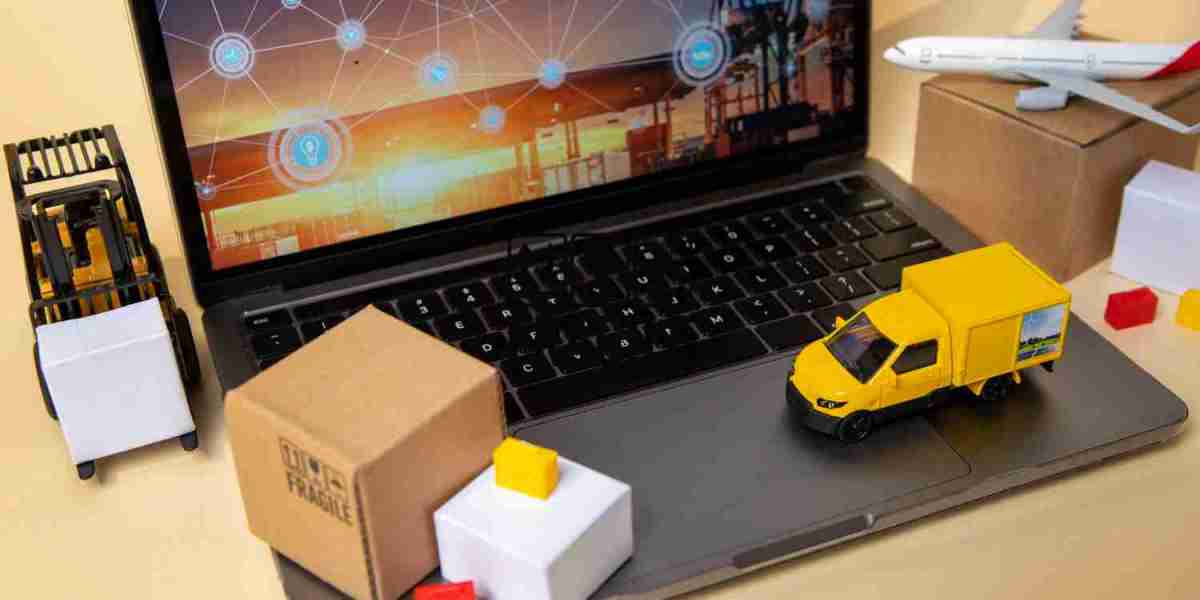Introduction
In today's fast-paced world, technology plays a crucial role in transforming various industries, and transportation is no exception. The integration of technology has revolutionized the way we travel, commute, and transport goods. From self-driving cars to smart traffic management systems, advancements in technology have made transportation more efficient, safer, and sustainable.[transportation industry email list] In this article, we will explore the role of technology in building a connected world, and how it has reshaped the transportation sector. Transportation industry mailing list
The Evolution of Transportation Technology
The transportation industry has witnessed significant technological advancements throughout history. From the invention of the wheel to the development of steam engines, each innovation has played a pivotal role in shaping the way we move from one place to another. However, the recent advancements in digital technology have propelled the transportation industry into a new era.
From Horse-Drawn Carriages to Electric Vehicles
In the early days, horse-drawn carriages were the primary mode of transportation. However, with the invention of the automobile, powered by internal combustion engines, transportation became faster and more convenient. Now, we are witnessing a shift towards electric vehicles (EVs) that are powered by electricity, reducing carbon emissions and promoting sustainability. According to a report by the International Energy Agency, the number of electric cars on the road surpassed 10 million in 2020, a significant milestone in the transition to clean transportation.
Revolutionizing Public Transportation
Public transportation plays a vital role in urban areas, where a large population relies on buses, trains, and trams for their daily commute. Technology has transformed public transportation systems, making them more efficient and accessible.
Intelligent Transportation Systems (ITS)
Intelligent Transportation Systems (ITS) utilize advanced technologies to improve the safety, efficiency, and reliability of transportation systems. These systems integrate various components such as traffic management, vehicle control, and passenger information systems to enhance the overall transportation experience. For example, real-time tracking and scheduling systems allow commuters to know the exact arrival time of buses or trains, reducing waiting times and improving reliability.
Automated Fare Collection
Gone are the days of paper tickets and manual fare collection. Automated Fare Collection (AFC) systems, commonly used in public transportation, have simplified the ticketing process. These systems use smart cards, mobile payment apps, or contactless payment methods to enable passengers to pay for their fares conveniently. AFC systems not only enhance the passenger experience but also provide valuable data for transit operators to optimize routes and improve service efficiency.
The Role of Connectivity in Transportation
The proliferation of the internet and the advent of connected devices have opened up new possibilities in the transportation sector. The seamless connectivity between vehicles, infrastructure, and passengers has transformed the way we travel and manage transportation systems.
Internet of Things (IoT) in Transportation
The Internet of Things (IoT) refers to the network of interconnected devices that can communicate and share data with each other. In transportation, IoT has brought forth numerous benefits, such as real-time monitoring, predictive maintenance, and enhanced safety.
Real-Time Vehicle Tracking and Monitoring
IoT-enabled sensors and GPS technology allow for real-time tracking and monitoring of vehicles. Fleet managers can track the location, speed, and condition of vehicles remotely, enabling efficient route planning, reducing fuel consumption, and improving overall operational efficiency. Additionally, IoT sensors can provide insights into vehicle health, detecting any maintenance issues before they escalate, thus preventing breakdowns and ensuring passenger safety.
Smart Traffic Management
Congested roads and traffic jams are common problems in urban areas. With IoT-based smart traffic management systems, traffic flow can be optimized through real-time data analysis and smart signal control. These systems can adjust traffic signals dynamically based on the current traffic conditions, alleviating congestion and reducing travel times. Furthermore, by integrating data from various sources such as weather conditions and public events, transportation authorities can proactively manage traffic and ensure a smooth flow of vehicles.
Connected and Autonomous Vehicles (CAVs)
Connected and Autonomous Vehicles (CAVs) are at the forefront of the transportation revolution. These vehicles leverage advanced technologies such as sensors, cameras, and artificial intelligence to navigate and communicate with their surroundings. The integration of CAVs into our transportation system has the potential to revolutionize road safety, reduce traffic congestion, and improve energy efficiency.
Enhanced Safety and Collision Avoidance
CAVs are equipped with advanced sensors and cameras that continuously monitor the vehicle's surroundings. This enables them to detect potential hazards and take immediate action to avoid collisions. Through vehicle-to-vehicle (V2V) and vehicle-to-infrastructure (V2I) communication, CAVs can exchange critical information, such as speed, direction, and road conditions, with other vehicles and traffic infrastructure. This connectivity enhances safety by enabling cooperative collision avoidance and early warning systems.
Increased Efficiency and Reduced Congestion
CAVs have the potential to greatly reduce traffic congestion and improve traffic flow. With their ability to communicate and coordinate with each other, CAVs can optimize their routes, reduce unnecessary lane changes, and maintain a consistent speed, leading to a smoother traffic flow. Additionally, CAVs can utilize real-time traffic data to dynamically adjust their routes, avoiding congested areas and minimizing travel times.
FAQs
- How does technology contribute to reducing greenhouse gas emissions in transportation?
- Technology plays a vital role in reducing greenhouse gas emissions in transportation. Electric vehicles (EVs) produce zero tailpipe emissions, making them an environmentally friendly alternative to traditional gasoline-powered vehicles. Additionally, advanced technologies, such as intelligent transportation systems and smart traffic management, optimize routes and reduce congestion, leading to reduced idling times and improved fuel efficiency.
- What are the potential challenges in adopting connected and autonomous vehicles (CAVs)?
- The widespread adoption of connected and autonomous vehicles (CAVs) faces several challenges. One of the major concerns is ensuring the safety and reliability of these vehicles. Extensive testing and validation are required to demonstrate the effectiveness and robustness of CAVs in various driving conditions. Moreover, the infrastructure needs to be upgraded to support CAVs, including the installation of connected traffic signals, vehicle-to-infrastructure communication systems, and the establishment of data sharing protocols between different stakeholders.
- How can technology improve the efficiency of freight transportation?
- Technology offers several ways to enhance the efficiency of freight transportation. IoT-enabled sensors and real-time tracking systems enable precise tracking and monitoring of shipments, minimizing the risk of loss or theft. Advanced logistics management systems optimize routes, load distribution, and delivery schedules, reducing transportation costs and improving overall efficiency. Furthermore, autonomous vehicles and drones have the potential to revolutionize last-mile delivery, making it faster and more cost-effective.
- What role does data analytics play in transportation technology?
- Data analytics plays a crucial role in transportation technology. By collecting and analyzing large volumes of data from various sources, such as vehicles, infrastructure, and passengers, transportation authorities can gain valuable insights into traffic patterns, congestion hotspots, and demand trends. This data-driven approach allows for informed decision-making, enabling the optimization of transportation networks, the identification of areas for improvement, and the development of targeted strategies to enhance the overall transportation experience.
- How does technology enhance the accessibility of transportation for people with disabilities?
- Technology has greatly improved the accessibility of transportation for people with disabilities. For example, wheelchair ramps and lifts in buses and trains make it easier for individuals with mobility impairments to board and disembark. Additionally, mobile applications provide real-time information about accessible routes, elevators, and ramps at transportation hubs. Furthermore, technologies like autonomous vehicles hold the potential to provide independent mobility options for individuals with disabilities, opening up new opportunities for transportation and integration into society.
- What are the potential privacy and security concerns associated with transportation technology?
- The integration of technology in transportation raises privacy and security concerns. The collection and sharing of data, such as personal travel patterns and location information, may raise privacy concerns if not handled properly. It is crucial to establish robust data protection measures and protocols to safeguard personal information. Moreover, as transportation systems become more connected, the risk of cyber-attacks and hacking increases. Implementing strong security measures, such as encryption and authentication protocols, is essential to protect critical infrastructure and ensure the safety of passengers and vehicles.
Conclusion
Technology has become the driving force behind the transformation of the transportation industry. From electric vehicles and intelligent transportation systems to connected and autonomous vehicles, advancements in technology have paved the way for a connected world of transportation. By leveraging technology, we can create more efficient, safer, and sustainable transportation systems that enhance the overall travel experience for individuals and businesses alike. As we continue to embrace innovation, the role of technology in building a connected world will only become more pronounced, shaping the future of transportation.







